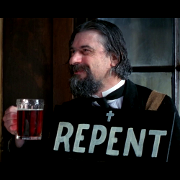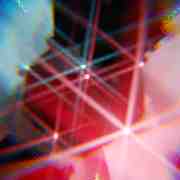|
Internet Explorer posted:This is super useful info, thank you. Celestron's got a little blurb on the two types here: https://www.celestron.com/blogs/knowledgebase/should-i-use-an-alt-az-or-equatorial-mount I think that you will get better tracking on an equatorial mount since, once you're aligned to the celestial north pole and pointed at your target, it only needs to track across a single axis (right ascension). If an alt-az mount is even capable of tracking, it would be doing so on both axes at once. Alt-az would be more fitted for looking at earth-bound objects, which is great if you're some kind of stalker or creep (or, more innocently, a wildlife enthusiast or something like that) but probably not the best option for stuff up in space. edit: Rolabi Wizenard posted:With an Alt Az mount you'll see field rotation in long exposures (Say, at or above 30 seconds). Fortunately, with today's super low noise CMOS cameras, you don't have to have super long exposures to get good frames that you can live stack with SharpCap (or similar). People use Alt Az mounts to view DSOs with live stacking from their back yards pretty effectively. ^^ Also, this. I don't use Sharpcap's live stacking, but I've thought about giving it a try. I'm more of a fan of grabbing all the frames now and worrying about stacking them later, myself, but with zero tracking you can definitely do ~30sec exposures at shorter focal lengths without worrying about drift. Golden-i fucked around with this message at 20:54 on Jul 25, 2019 |
|
|
|

|
| # ? May 30, 2024 18:51 |
|
I will say this: Alt-az is great if you're worried about space or weight. They're a lot easier to transport around since there's no counterweights, and tend to be smaller. I'd be remiss if I didn't mention that all of my equatorial mounts are... cumbersome, to say the very least.
|
|
|
|
I'm considering upgrading to 2" eyepieces on my 8" dobs. Any recommendations for a decently-priced basic set?
|
|
|
|
Golden-i posted:I went with the Celestron Advanced VX mount that shipped with their 8" reflector scope and one or two eyepieces, which is in the ~$1250 range, I think. I got a very similar setup except with the 6" telescope option for $820 on sale, and I like it pretty well. Tracking isn't perfect but I've gotten some pretty good photos. One thing to keep in mind is that the mounts all have published weight limits. This is the weight for your equipment, not including the counter-weights, but it does include the telescope and any cameras and other gear. The Celestron AVX (and similar mounts in its weight class like the Orion Sirius) is rated for about 15 kg of gear, but various online sources suggest sticking to about half the weight rating for photography. The 6" telescope version is about 5 kg, while the 8" version is about 10 kg, which was the main reason I went with the smaller model. People often end up adding a second smaller telescope for guiding (I adapted one out of a $10 telephoto lens I found at a camera store) so the weight can add up. If I was doing this again from scratch, I'd probably get a mount by itself and buy a GSO telescope like this since it looks much better made than the Celestron version.   
|
|
|
|
Luceo posted:I'm considering upgrading to 2" eyepieces on my 8" dobs. Any recommendations for a decently-priced basic set? You only need 2" barrels when your field stop is bigger than a certain diameter. 2" barrels all the way down to your smallest focal lengths is a waste. You only benefit from the additional diameter at low magnifications. When you're eyepiece shopping, there are many things to consider. I assume your 8" dob is an f/6? (1200mm focal length) The reason I ask is because fast focal ratios can be tough on cheap eyepieces. f/6 is friendly enough for most anything. Second thing to consider is whether you have astigmatism. Regular myopia can be focused out, but if you have astigmatism, you'll want to wear your glasses at low magnifications. If you need to wear glasses at low magnifications, then you'll want to choose eyepieces with good eye relief. How much money are you thinking of spending? (removed bad paragraph because of bad math) If you live in the burbs or under light pollution, your dark adapted eye probably won't dilate wider than ~4mm, so going below about 25mm will only be useful if you drive out to dark skies. The Explore Scientific 68 degree 24mm (50x) and 28mm (42x) eyepieces would be good bang-for-the-buck medium-low magnification eyepieces with reasonable eye relief. You'll notice that going from 24 to 28mm at 68 degrees FOV, the field stop requires the jump to a 2" barrel. Here's the 24mm in a 1200mm focal length scope: The Double Cluster will look awesome and well framed like this, in the winter time.  The Hercules Cluster is up now, and well framed by the 24mm at 50x:  Unless you're out at a dark sky site, I wouldn't go lower than 24mm. god drat that was a rambling post and I'm not sure I even answered the question. Don't buy a kit of plossls. duodenum fucked around with this message at 22:15 on Jul 25, 2019 |
|
|
|
Tyrgle posted:I got a very similar setup except with the 6" telescope option for $820 on sale, and I like it pretty well. Tracking isn't perfect but I've gotten some pretty good photos. Dang, those are some really nice shots! That Orion Nebula is really gorgeous. Weight was the primary reason I upgraded to an EQ6-R to replace my AVX - all told, my gear weighed about 22lbs, and the ~30lb limit on the AVX meant that it could run without burning out the motors, but they really struggled to keep up with fine movements. I did pick up a new guiding scope, since the one that came with the 8" reflector was a real piece of crap. Guiding camera should arrive tomorrow - I decided to see how the ZWO ASI120MM Mini works out - and I'm heading up to my somewhat-darksite next weekend to try it out.
|
|
|
|
This might sound like a strange question but when you are setting up these photos what do you actually see?
|
|
|
Dick Trauma posted:This might sound like a strange question but when you are setting up these photos what do you actually see? I wonder about this too. If I was going to get a scope and not bother with photography at all, how much of this would actually be visible for someone not using an observatory caliber setup just looking into an ocular.
|
|
|
|
|
Rolabi Wizenard posted:You only need 2" barrels when your field stop is bigger than a certain diameter. 2" barrels all the way down to your smallest focal lengths is a waste. You only benefit from the additional diameter at low magnifications. Thanks for all of this! It's an f/6, yes, and I don't have astigmatism. My area has lots of ambient light, but it's alright for a suburb. I'm looking at a few hundred bucks.
|
|
|
|
Dick Trauma posted:This might sound like a strange question but when you are setting up these photos what do you actually see? Here's an example of EAA, Electronically Assisted Astronomy. This guy uses a C8 on an Alt Az mount with Hyperstar, which means he's imaging at f/2 and he's using a very sensitive low noise CMOS camera in the ASI224MC. Occasionally you'll see him slew the telescope and you see the streaks of stars, and when he settles on an object, you see the nebulosity immediately. he then sits on the object there and collects/stacks a few more frames. The additional data smooths out the noise and you begin to see more detail. The app he's using allows you to tweak the histogram, setting the black/mid/and white points, so you can view the data as you please as it comes in. https://www.youtube.com/watch?v=iTgVT_WGThM Actually in this video, he's not stacking. Just viewing the 1 second frames as they come in.
|
|
|
|
Rolabi Wizenard posted:Here's an example of EAA, Electronically Assisted Astronomy. This guy uses a C8 on an Alt Az mount with Hyperstar, which means he's imaging at f/2 and he's using a very sensitive low noise CMOS camera in the ASI224MC. I've said it before but it boggles my mind that these sights are just... up there. If someone wants to see them all they have to do is point the right piece of equipment in the right direction and there it is.
|
|
|
|
Luceo posted:Thanks for all of this! It's an f/6, yes, and I don't have astigmatism. My area has lots of ambient light, but it's alright for a suburb. I'm looking at a few hundred bucks. I'd get 3 eyepieces, maybe 4. With no need for glasses and a "few hundred bucks" to spend, I think I'd still recommend the ES 68 and/or 82 degree eyepieces. Great bang for the buck. Divide your scope's focal length (1200) by the eyepiece's focal length to get your magnification. Shoot for 200x for planets, with your 8" of aperture. Maybe 250x if you feel like you can smoothly push the dob and keep up with the planet scooting on by out of your FOV. (200x is plenty, unless you have a tracking mount) Another eyepiece at about 100x, and a third at 50x. Sit on those for a while and see what you like, what objects you enjoy and where you'd think you'd add an additional focal length. So, something around 6mm, 12mm, and 24mm. Maybe an ES82 11mm, a Barlow to make that 5.5mm for planets, and the ES68 24mm or the ES82 24mm, depending on your budget.
|
|
|
|
Dick Trauma posted:This might sound like a strange question but when you are setting up these photos what do you actually see? Bear in mind that I'm really new to shooting DSOs... but this is what I've figured out through trial-and-error, anyways. It really depends on how bad the light pollution is. When I'm shooting at home, I'm in the suburbs so there's a ton of light pollution (Bortle class 7 or so). I can't see any DSOs without a camera, except a faint wisp of the Orion nebula, maybe. Using SharpCap to perform shorter exposures (maybe 2 seconds) at maximum gain will produce an image that kinda lets me see what I'm aiming for. If I'm shooting a galaxy, like the Pinwheel Galaxy, I couldn't actually see the galaxy itself. I did see a large dark spot in the stars, though, which would be the galaxy blocking light from the stars deeper out in space. Turn the gain down, crank the exposure up to 1 minute, and SharpCap shows me this:  You can see it in the center of the frame, baaaaarely, and that's more than I can see with just a telescope+eyepiece. Stretch the histogram, either in Pixinsight, photoshop, live in SharpCap, or wherever else, and you see this:  So, it's there, but very faint and is gonna take a lot of exposures and a few hours of noise reduction and correcting for that nasty light pollution glow. But I was able to turn 90 or so exposures like that into this:  That being said ,if you have access to somewhere that's a bit clearer - like when I go up north to our Bortle class 2-ish cabin - this is a rough approximation of what I was able to see of the Dumbbell Nebula (roughly the same magnitude as the Pinwheel Galaxy) with just a low-magnification eyepiece:  Light pollution will play a huge factor in to whether or not you will be able to do casual observations of DSOs, but, it's not a deal-breaker if you want to get into DSO photography. Golden-i fucked around with this message at 22:42 on Jul 25, 2019 |
|
|
|
Rolabi Wizenard posted:You only need 2" barrels when your field stop is bigger than a certain diameter. 2" barrels all the way down to your smallest focal lengths is a waste. You only benefit from the additional diameter at low magnifications. The exception being eyepieces with wide apparent field of view. Those need large barrels for practical construction despite having field stops that would fit with a 1¼″ barrel. “Decently‐priced” they are not, however.
|
|
|
|
Platystemon posted:The exception being eyepieces with wide apparent field of view. That's true! I wouldn't want to hang an Ethos off a 1.25" barrel.
|
|
|
|
Golden-i posted:this is a rough approximation of what I was able to see of the Dumbbell Nebula (roughly the same magnitude as the Pinwheel Galaxy) with just a low-magnification eyepiece: The Ring Nebula as a ghostly gray and faint ring with my 6" of aperture and Bortle 8 skies. Did you see color in the dumbbell visually? I get the impression that seeing color in DSOs (outside of M42) is the stuff of huge aperture dobs and ladders in the darkest of dark skies. ...and maybe young eyes. I'd like to get more experience with dark skies, for sure. I'm jealous of that Bortle 2 Cabin!
|
|
|
|
Rolabi Wizenard posted:I'd get 3 eyepieces, maybe 4. With no need for glasses and a "few hundred bucks" to spend, I think I'd still recommend the ES 68 and/or 82 degree eyepieces. Great bang for the buck. Thanks, that's some great advice!
|
|
|
|
Rolabi Wizenard posted:The Ring Nebula as a ghostly gray and faint ring with my 6" of aperture and Bortle 8 skies. Did you see color in the dumbbell visually? I get the impression that seeing color in DSOs (outside of M42) is the stuff of huge aperture dobs and ladders in the darkest of dark skies. ...and maybe young eyes. It was shocking. The first time I brought the scope up there was 2 weeks ago, and you can genuinely see the orange/blue colors of the Dumbbell, just faintly. I knew it would be better up there, but maaaaan, I really underestimated the difference it would make. The ring nebula was out that weekend as well. I didn't save any exposures on it, but a 2-second exposure on medium gain and it was clear as day: bright orange and blue. Absolutely incredible. I'll be going up as frequently a I can and will definitely be spamming this thread with the results.
|
|
|
|
Tyrgle posted:I got a very similar setup except with the 6" telescope option for $820 on sale, and I like it pretty well. Tracking isn't perfect but I've gotten some pretty good photos. Ugh, this is what happens to me every time. I've done hours and hours of research and then I get gear decision overload. I'm wondering if it doesn't make sense to just get the Edge HD 8 with the AVX Advanced and then just upgrade the mount when the time comes. Or maybe I'll just get the Celestron C6 SCT OTA - CG5 with the AVX and just use that and if I get into the hobby more decide from there.
|
|
|
|
Internet Explorer posted:Ugh, this is what happens to me every time. I've done hours and hours of research and then I get gear decision overload. I'm wondering if it doesn't make sense to just get the Edge HD 8 with the AVX Advanced and then just upgrade the mount when the time comes. The EdgeHD 8" on the AVX is $2,149.00. That combo would be fine for visual, but the 8" SCT on an EQ5 class mount is not going to make you very happy if you want to do real, long exposure astrophotography. If you got just the AVX, you'd have like $1200 left for an OTA. If you're rolling in cash, $1200 is within spitting distance of the $1650 Esprit 80mm triplet (includes field flattener), which would be a fantastic OTA for photography maybe for a lifetime, depending on your preferences. But go easier on your wallet and your AVX and get an AT60ED or AT72EDII with a matched field flattener. Then you'd be on your way.
|
|
|
|
FWIW that AT72EDII will probably be my next scope, unless I wait a bit longer and splurge on something like the aforementioned Espirit 80mm. It might be worth saving up for that one, because it is a drat nice scope.
|
|
|
|
Dick Trauma posted:This might sound like a strange question but when you are setting up these photos what do you actually see? There's a lot of light pollution where I live, so looking through an eyepiece these sights are at best a fuzzy blur. Still amazing, though. When taking photos, I need to carefully balance the scope with the camera on it so there usually aren't any eyepieces involved. I took those photos with a DSLR, and with the ISO cranked up all the way with live view, I can see a fuzzy blur, but of possibly dimmer objects than I can make out visually. More recently I've just used plate solving to point the telescope, so the first shot is a decently long exposure. Here's a single frame from the Whirlpool Galaxy shot above, as the camera saw it. It's about a 30 second exposure (I think), with a UFO. You can see the galaxy if you squint:  After stacking together about an hour's worth of these photos, Siril produced this image:  Then finally, I set the black point and played with the histogram etc. and cropped to produce: 
|
|
|
|
Whoah look at all the posts! If you are just getting started with DSO astrophotography I recommend you do NOT buy an SCT. Buy a refractor first. You will thank me later. SCTs are fine if you're going to do planetary or lunar photography, but because of their longer (in general) focal lengths, you need a lot better tracking. (which means more $$$) I would recommend going with a good 80mm refractor of some sort (I have a Skywatcher ProED 80) plus a mount like an AVX or one of the iOptron mounts (SmartEQ maybe). I would not recommend going above a 6" SCT with those mounts (doing photography) because you'll run up against their weight limits. Note, I have no opinions on Newtonians for photography as I've never used one. But I understand that they tend to fairly heavy and bulky (see some comments above) so I don't think I'd start there either. I would also not mess with Dobs and barn door trackers, unless you just like to tinker. You can also start with just doing wide field photography. Get an iOptron SkyTracker Pro and use it with a DSLR. You can use 'normal' lenses (like, 50mm fixed lens, or various zooms, or telephoto) or go ultra-wide (like 16mm). The wider your view is, the looser your tolerances are on tracking, which will make things easier and lower your frustration.
|
|
|
|
All good advice, thank you! I remember that refractors are better for DSOs but I guess I got my wires crossed and heard that it didn't matter as much. I'll do some more looking and see what I can find as far as refractor options go. I mentioned in my OP, forever ago already, that I will probably get a star tracker and do wide field stuff. I have a 14mm lens that is supposedly very good for astrophotography, and I've seen some pictures with the 55-200mm that I have that seemed pretty nice. Definitely going to do some of that. Thanks for all the advice, goons. Your wisdom is much appreciated!
|
|
|
|
What do you all think about something like this? Definitely in the price range and the mount seems to have a little more room for error in the weight side of things. https://milehighastro.com/products/lx85-series-80mm-apo-refractor
|
|
|
|
I like the look of the scope, I think Meade is supposed to make some decent scopes but I've never worked with one myself. Can't say about the mount, I'm unfamiliar with it... I've got a question about PPEC if anyone can help me out - I'm trying to understand the fundamentals of it before I try applying it. My understanding is that the mount needs to be parked between uses for the PPEC/PEC curve to continue to apply. Does that mean that if you move the mount with the clutches engaged between uses, you'll need to re-do your PPEC/PEC recording?
|
|
|
|
Internet Explorer posted:All good advice, thank you! I remember that refractors are better for DSOs but I guess I got my wires crossed and heard that it didn't matter as much. I'll do some more looking and see what I can find as far as refractor options go. For observing by eye Newtonian s are generally better bang for your buck with DSO s as you get dramatically more aperture than with an apo. You aren't generally going to see many nebulas etc with 80mm and your eyes.
|
|
|
|
However, for astrophotography refractors have better contrast for a given aperture, and no diffraction spikes. Personally I like the diffraction spikes, but your preferences may vary.
|
|
|
|
Luneshot posted:However, for astrophotography refractors have better contrast for a given aperture, and no diffraction spikes. Personally I like the diffraction spikes, but your preferences may vary. Contrast for a given aperture always seems like a weird metric to me, since for the same price you're comparing a small refractor to an enormous reflector. A low-end 80 mm APO refractor costs in the same range as a big 250 mm newtonian. If you go up to the fancy 130 mm imaging refractors, it's $3,000-$6,000, vs. maybe $100-200 for a similar size reflector. Or for $3,000 a... uh... 250 mm truss Ritchey-Chretien astrograph. Obviously this is dumb since you need a $10,000 mount for a telescope that big, but the point is you're never comparing two things with the same aperture. You can take good pictures with a newtonian, it's just very fiddly compared to a refractor. You need to get the collimation just right especially with a coma corrector, there are back focus issues, balancing issues, etc. I grew up with a newt on an equatorial mount so none of this stuff really bothers me, but I can see the appeal of only getting mad at your tracking mount instead of your mount and your optics at the same time.
|
|
|
|
Internet Explorer posted:What do you all think about something like this? Definitely in the price range and the mount seems to have a little more room for error in the weight side of things. That looks ok to me, but as always I recommend searching for the scope on Cloudy Nights (https://www.cloudynights.com) and seeing if people have impressions there. There are usually threads for specific equipment, manufacturers etc. Golden-i posted:
Not sure I understand, are you moving the scope manually with clutches engaged? I don't know why you'd need to do that. I think it would mess up PEC in general because now the curve and the state of the motors are out of sync. When clutches are engaged I only move the mount electronically. When clutches are disengaged, for balancing etc, I move the mount back to the parked position then re-engage. pointsofdata posted:For observing by eye Newtonian s are generally better bang for your buck with DSO s as you get dramatically more aperture than with an apo. You aren't generally going to see many nebulas etc with 80mm and your eyes. Yeah, but he's talking about photography. There are pros and cons to each, but I think it's just the easiest starting point for someone that is learning. hannibal fucked around with this message at 00:50 on Jul 27, 2019 |
|
|
|
Golden-i posted:I've got a question about PPEC if anyone can help me out - I'm trying to understand the fundamentals of it before I try applying it. My understanding is that the mount needs to be parked between uses for the PPEC/PEC curve to continue to apply. Does that mean that if you move the mount with the clutches engaged between uses, you'll need to re-do your PPEC/PEC recording? Maybe someone who knows more has a more definitive answer, but my understanding is that PEC is just to compensate for mechanical variation in your particular stepper motor and worm. Since the motor has an encoder in it, as long as it's permanently meshed to the worm it shouldn't matter what you do with the clutch, just if you take the mount apart or replace the motor etc. At least on my mount the clutch just disengages the worm from the actual rotating head so it can spin freely. The mount still knows where the motor is on the worm, it just doesn't know how that relates to where the telescope is pointing. Unless you have a super high end mount with absolute encoders, anyway.
|
|
|
|
idk if this is relevant at all by my only optics are a 10-60x refracting spotting scope and I was able to resolve faint stripes on jupiter a few years ago when it was in conjunction and directly overhead. that was by eye, though, the best i can muster for taking photos is holding my phone up to the eyepiece and that isn't possible with the simple tripod I have for the scope
|
|
|
|
Here's another taste of EAA. Just a guy with his camera hooked up to a telescope, browsing around at about 4FPS or so. https://www.youtube.com/watch?v=z80vnWCLc3o After the first slew between the Lagoon and the Trifid, he seems to have edited out the slews (another one at 3:25). I like the slews, the context makes it feel more real and fun. EAA, or video astronomy, is pretty casual compared to serious Astrophotography like some of the pretty stuff you've seen people post in this thread. These short exposures don't require a really nice equatorial mount. You can get into this kind of thing with something like the Sky Watcher AZGTi (control your scope via wifi with your phone or tablet), a small refractor (ideally, for simplicity), and a nice sensitive, low noise CMOS camera like a ZWO ASI294MC (non-Pro, unless you intend to do LONG exposures). Optionally, a field flattener and a light pollution filter. The guy in the video doesn't even bother to comment on the amp glow coming from the left corners, because that's not the point. Select an object on your phone, slew to it, view it on the screen. Maybe try a longer exposure, maybe try higher gain. Hey that's pretty cool, what's next? Select it, slew to it. ZWO also makes a Raspberry PI based thing called ASIAIR which connects to your mount, your camera, and an Android or iOS tablet. Stellarmate is another one, a bit more complex (and capable). Putting this kind of thing on your tablet without much of a hassle. Well, I guess the hassle is relative.
|
|
|
|
Here's another way to do live astronomy, with a several thousand dollar Gen 3 night vision tube, viewing the sky at about 4x. Just like you're looking up with night vision eyes. https://www.youtube.com/watch?v=--xZmXnFOM8 Same guy, using a White Phosphor tube. Big bucks. https://www.youtube.com/watch?v=Dq706Oa_X0g Same guy again, this time through a scope with some magnification. He slews from Lagoon to Trifid (like the guy in the last post) at about 1:18 https://www.youtube.com/watch?v=UxBdtqExxvs I prefer the look using a color CMOS camera, but the night vision thing is pretty cool.
|
|
|
|
I find that interesting as hell because it just goes to show how big the nebula really are.
|
|
|
|
Boy look how busy this thread is all of a sudden. I'd like help identifying a thing. I was stargazing with my eyes (and that of a companion) last night, and we weren't sure what we saw. Conditions: Hazy sky, horizions obscured, only directly above was visible. Caseopia was there. Still, light pollution was extremely small as we were very remote, we could still make out the milkyway. What we saw: We were looking for shooting stars, and saw some. But this object was moving more like a satellite. However it was very bright, seemingly several times brighter than any of the stars visible. We watched it for several seconds and then noticed its brightness was steadily lessening. It went from being the brightest object to being totally invisible over the course of a few seconds. Total viewing time of it was... hard to say, 5 seconds? A bit more? It was around 3 hours after sunset, very rough. Object seemed to be moving roughly south. My best guess was a satellite that was crossing the terminator, though its brightness would be improbable. As a shooting start it seemed to move far too slowly. Any guesses?
|
|
|
|
Count Roland posted:Boy look how busy this thread is all of a sudden. I'd like help identifying a thing. I saw a similar oddity last week (oddly enough after watching an episode of X Files about aliens). I thought it was a bright star and then noticed it was moving. It was low in the northeast sky, and as it "set" from left to right on a slight angle it looked like it jogged ever so slightly left and right every so often, and faded as it neared the horizon. It was a couple hours after sunset so beyond the weird movement I chalked the fading up to the terminator. Was not the first time I've seen weird stuff out here. I've seen what at first glance thought was a star, get suddenly bright and then fade to black. So besides the spooky stuff, I have been sitting on my hands waiting for a windless cloudless and moonless sky. http://www.cleardarksky.com/c/DpthAfObUTkey.html?1 I check cleardarksky every so often and would like to trust it, but damned if I fail to put up my gear and walk out around midnight and am knocked over by the milky way.
|
|
|
|
Satellites. Very common. https://en.wikipedia.org/wiki/Satellite_flare
|
|
|
|
Count Roland posted:Boy look how busy this thread is all of a sudden. I'd like help identifying a thing. Your description sounds like an Iridium flare. There are still a few of Iridium’s old model LM‐700 up there, and it’s possible for other satellites to do similar things—LM‐700s just had the perfect geometry to do it stunningly and predictably.
|
|
|
|

|
| # ? May 30, 2024 18:51 |
|
Rolabi Wizenard posted:Satellites. Very common. Satellites do not change course several times over the span of a couple minutes (at least not enough to be noticeable to the naked eye)
|
|
|




























